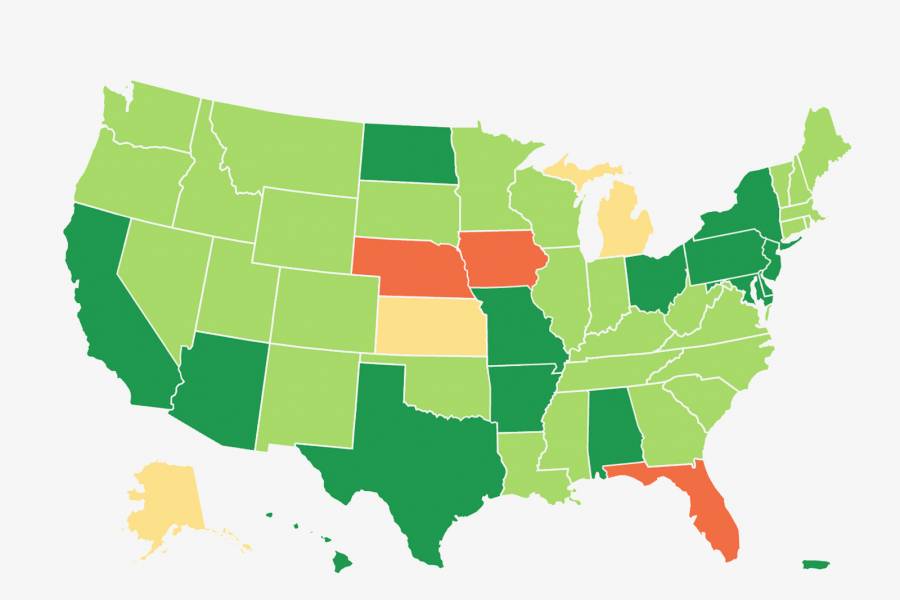- Name
- Jill Rosen
- jrosen@jhu.edu
- Office phone
- 443-997-9906
- Cell phone
- 443-547-8805
The Johns Hopkins Coronavirus Resource Center today published a new graphic visualization and analysis detailing the troubling trend of U.S. states eliminating daily reporting of COVID-19 data.
According to CRC experts, daily reporting on cases, hospitalizations, deaths, and other vital data is decreasing at a time when more public data is needed, not less—as the highly transmissible Delta variant is driving a new surge in the pandemic. "If we are not publishing daily information on the number of positive test results we will not have the most up-to-date understanding of how quickly and where cases are spreading," said Jennifer Nuzzo, a senior scholar for the Center for Health Security and the CRC's lead epidemiologist.
In June, when there were about 100,000 new cases in the United States, 21 states had stopped reporting COVID-19 data on the weekends and three states were reporting less frequently. States have continued to reduce reporting even as new COVID-19 cases continued to climb, exceeding 900,000 in the United States last week. Today, 36 states do not update their dashboards every day, 11 report some data less than five days a week, and six of those report some data streams only once per week.
Daily reporting of COVID-19 data has been critical for public health agencies to successfully track and combat the virus over the past 18 months by effectively targeting limited resources to emerging hotspots identified by data analysis. The CRC's Pandemic Data Initiative first warned of the perils associated with limited reporting two months ago and revisits it with a new analysis by Beth Blauer, associate vice provost for public sector innovation, and Lauren Gardner, director of the Center for Systems Science and Engineering.
"Unfortunately, many states are limiting or stopping public reporting of vital data, a move that will limit the nation's ability to anticipate disease spread," says Blauer, who is also the CRC data lead. "Governments of all sizes—local, state, and federal—need to continue their daily data collection efforts to tackle the current resurgence."
Gardner says states demonstrated they had the infrastructure and capacity to report data daily. "However, instead of investing in sustaining the infrastructure already established, states are, more often, scaling back," she says.
The CRC published a one-stop national resource that presents an easy-to-use interface detailing which states have begun to limit the amount of critical data that experts say is required if the nation expects to outpace the virus. Visitors to the site will be able to view reporting cadences across the United States on four color-coded maps, one each for cases, deaths, tests, and vaccines.
The graphic also displays the number of states reporting on each day of the week. No more than 17 states report data over the weekend, resulting in consistently skewed data at the start of each week for the remaining 33 states.
The Coronavirus Resource Center has been a continuously updated source of COVID-19 data and expert guidance since the pandemic began. Its Pandemic Data Initiative explores lessons from the pandemic on how best to support government efforts to collect and deliver comprehensive real-time information.
Posted in Health, Science+Technology, Politics+Society
Tagged coronavirus, covid-19 variants, coronavirus resource center








